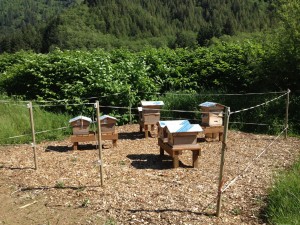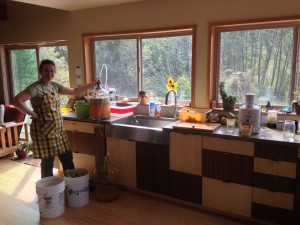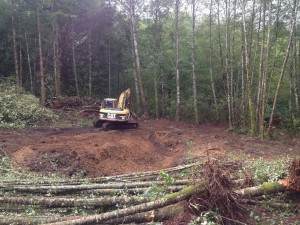Honey extraction is done. Whew! That’s a lot of work. I guess I shouldn’t complain, though- it’s the beez that are doing most of the hard part. This year was very productive, by coastal standards, and I averaged 31.1 pounds of honey per colony. That’s up from last year’s 25.9, and in line with the accepted norm of ±30 pounds per colony on the Oregon Coast. Compare this to the midwest, though, where the summers are hotter and the spring/fall are drier, and those guys average 60 pounds or more.
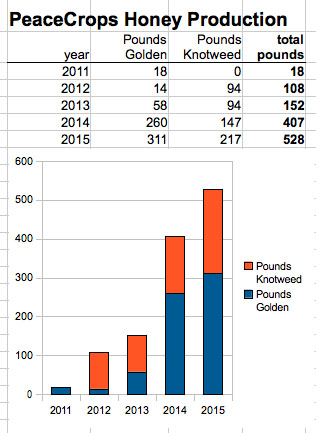 Here we see the totals in graph form. There is a big jump from 2013 to 2014; that’s when we received the IDA grant to buy a dozen new hives. 2015 saw the addition of more hives for the Cozy Bee Project, and that jump would have been bigger if not for the bear attack that happened after the harvest in 2014. That took a lot of work to recover from, and without the Cozy Bee support, we would have actually seen a decrease in production in 2015.
Here we see the totals in graph form. There is a big jump from 2013 to 2014; that’s when we received the IDA grant to buy a dozen new hives. 2015 saw the addition of more hives for the Cozy Bee Project, and that jump would have been bigger if not for the bear attack that happened after the harvest in 2014. That took a lot of work to recover from, and without the Cozy Bee support, we would have actually seen a decrease in production in 2015.
Now I have to finish bottling. There are Cozy Bee gifts to be mailed out next week, return customers to supply, and three local merchants (Manzanita Market, Nehalem Beehive, and North Fork 53) have asked to carry my honey as well. Looks like there is still plenty of room to grow! Next year I am going to follow some advice I read in a beekeeping book somewhere, and throw a honey party. The idea is you invite a few friend over, they help you bottle and extract, and you send them home with some honey for their trouble.
In other bee news, I’ve winterized the hives in the Foley Creek apiary, and will get to the Nehalem River apiary as soon as the downpour subsides. As a parting gift, I present to you the Winterization Checklist, for your entertainment:
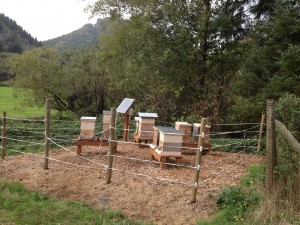 Update weatherproof hive label on bottom board
Update weatherproof hive label on bottom board- Check roof sensor
- Install entrance reducet
- Open hive
- Collect sample for varroa destructor
- Collect sample for nosema spp.
- Inspect colony & record observations
- Count mites and apply Apiguard if infestation rate >3%
- Set sensor in hive
- Add supplemental food if stores are low
- Replace roof, and verify configuration for CBP study
- Add roof weights (Nehalem River apiary only)
…and then repeat 7 more times for the other hives in the apiary. Thankfully, my energetic apprentice EV helped, so it only took about 2.5 hours to do. It looks like my other apprentice Allyson might help me with the Nehalem River apiary; if not, I’ll keep you posted on how long this takes with one person.

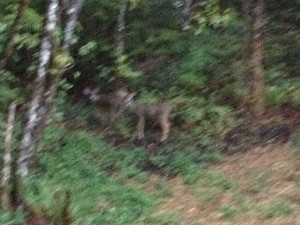
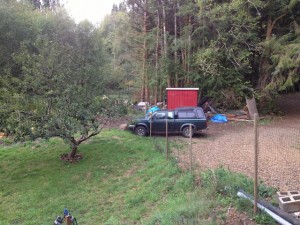
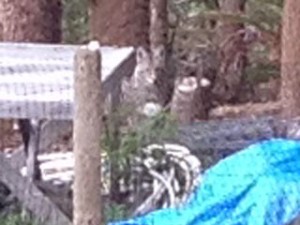
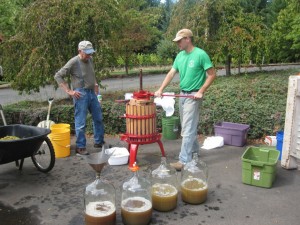
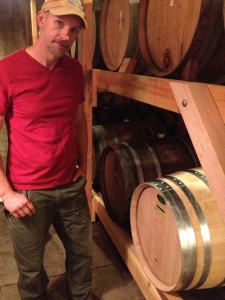
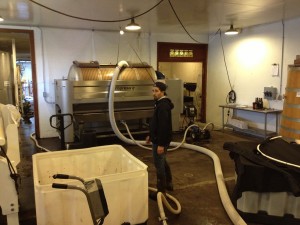
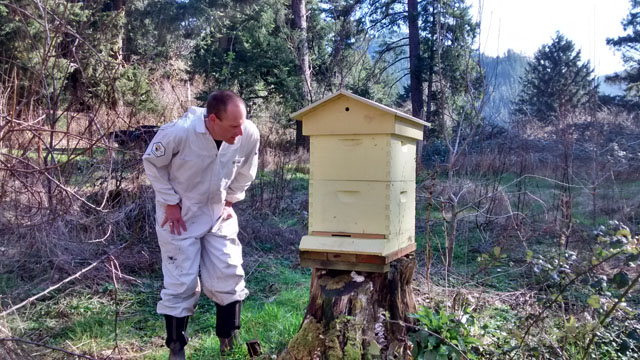 … and the other reason I’ve not been chatty lately is that the honey harvest is on. It takes more and more time each year, for a few reasons:
… and the other reason I’ve not been chatty lately is that the honey harvest is on. It takes more and more time each year, for a few reasons: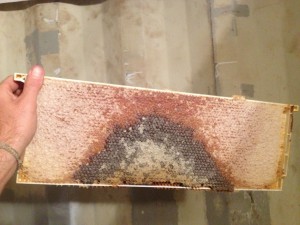 Before I talk about that third item, I want to show you something interesting and educational. What you see here is a capped honey frame I pulled out of one of my hives a few days ago. In this part of the country, we have two distinct honeyflows: “wildflower,” or basically anything the bees can get, which is probably more than half Himalayan Blackberry. They gather this all summer long, starting in May or so and going until mid August. Then, about the time all the other flowers dry up, the Japanese Knotweed sets flowers. This happens in the last week of August and the first week of September, and the nectar is dark like molasses. You can se it distinctly in the middle of the frame… look at that color difference!
Before I talk about that third item, I want to show you something interesting and educational. What you see here is a capped honey frame I pulled out of one of my hives a few days ago. In this part of the country, we have two distinct honeyflows: “wildflower,” or basically anything the bees can get, which is probably more than half Himalayan Blackberry. They gather this all summer long, starting in May or so and going until mid August. Then, about the time all the other flowers dry up, the Japanese Knotweed sets flowers. This happens in the last week of August and the first week of September, and the nectar is dark like molasses. You can se it distinctly in the middle of the frame… look at that color difference!